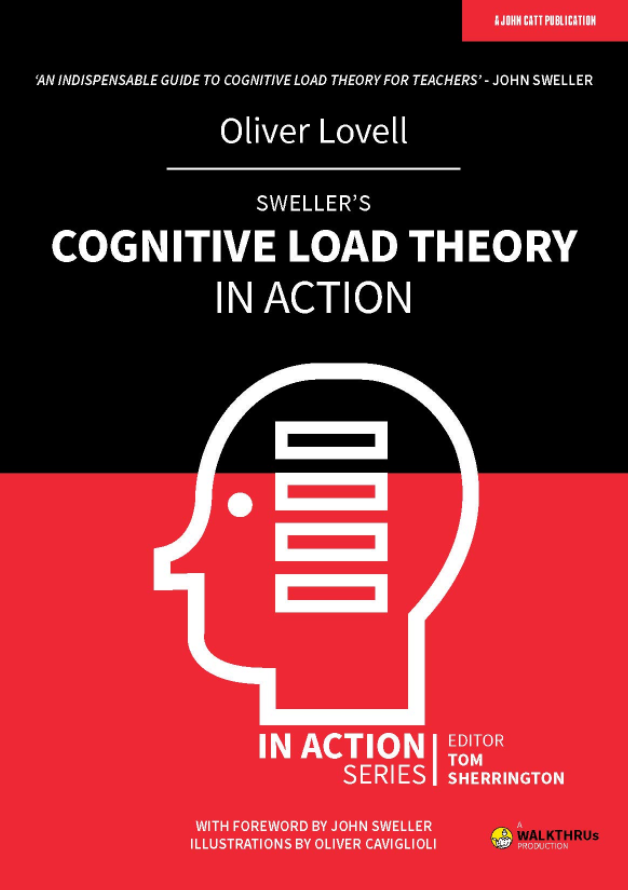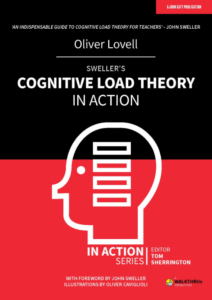Researchers tend to focus on particular topics in education.
Some folks study attention, while others look at motivation.
A research team here might look at working memory, while that team over there considers sleep.
And: let’s not forget about technology!
Of course, it’s useful to have specialists in each of these fields; each one is highly complicated.
At the same time, as teachers, we need to understand how all the pieces fit together.
After all, if I’m successfully managing my students’ working memory load, but they’re not paying attention, then all my working-memory efforts have gone to waste.
For this reason, we’d like greater clarity about putting the pieces together.
For instance, you might wonder: what’s the relationship between cognitive load and motivation?
I’m so glad you asked…
Calling Austrialia
In a recently-published study, an international group of researchers asked almost 1300 Australian students in grades 7-10 to fill out surveys about their academic experience.
Some questions asked student to rate their teachers’ efforts to reduce the complexity of the material (that is, the “instructional load”):
On a scale of 1-7, they responded to statements like:
“When we learn new things in class, the teacher makes it easy at first.”
“As we work on tasks or activities in this class, the teacher gives good assistance.”
“In this class, the teacher makes sure we get enough practice before moving on to new tasks or activities.”
Other statements focused mental work the students were doing (that is, their “cognitive load”):
“The work in this class is very difficult for me.”
“The way information is presented in this class is too complex.”
Still others inquired about the teachers’ motivational strategies, and the students’ experience of motivation:
“The teacher communicates which learning goals he/she expects you to accomplish
by the end of the lesson;”
“The teacher doesn’t plan or organize too much. The lesson will just happen;”
“The teacher offers a very interesting, highly engaging lesson;”
“The teacher insists that you have to finish all your required work—no exceptions, no excuses”
As you can see right away, these researchers have an ENORMOUS amount of data to crunch as they calculate the relationships among all these variables.
By the way, we should note the researchers’ method here: they’re considering survey data. Some people — quite reasonably — worry that survey data can’t really capture classroom reality.
For instance, a student might perceive that “the teacher doesn’t plan or organize too much. The lesson will just happen.” But that perception might be entirely inaccurate.
With that caveat in mind, what did the researchers find?
The (Basic) Results: Reversing Assumptions
Given all the variables measured above, we can expect LOTS of findings — reported in graphs and equations and declarations.
What does it all boil down to?
The simple summary reverses a common belief.
Teachers often assume that “when my students feel motivated, they will learn more.”
These data suggest that “when my students learn more, they feel motivated.”
More precisely: according to the survey data, teachers who ensure that cognitive load remains managable help students learn more. That additional learning correlates with higher subsequent motivation.
This finding makes a rough-n-ready sense. For example: my students rarely clamor to learn grammar; they are, honestly, not super motivated to do so.
However, part of their demotivation results from the fact that grammar learning is notoriously difficult. (“Object complements,” anyone?) My students just feel bad when they keep failing at it.
If I teach well — that is, if I reduce the cognitive load of learning grammar — they are likelier to succeed at doing so. Result: they feel less demotivated. Heck, they might even feel motivated.
The (Advanced) Results: All That Lingo
Research ain’t research if it doesn’t include lots of niche-y terminology.
Unfortunately, as is often the case, the terminology here gets rather confusing.
Because the research team draws on two very different fields (working memory, motivation), and two different theories (cognitive load, self-determination), we can easily get bogged down in the terminological niceties.
For example, the researches consider a teacher’s motivational style along two axes: do the teachers support or thwart students’ needs; are they highly directive or not. The resulting four quadrants are broken down into further sub-categories, resulting in — I’m not joking here — EIGHT different teaching styles: “attuning,” “guiding,” “clarifying,” “demanding,” “domineering,” and so forth.
The word “autonomy” — quite an important word in self-determination theory — leads to particular puzzles.
We might reasonably think that “autonomy” means “the teacher encourages students by giving them relatively more freedom to explore and solve problems on their own.” However, in this terminological world:
“Autonomy support … directs attention towards activities that are necessary for learning, thus reducing the proportion of cognitive load that is extraneous.”
Which is to say, teachers support autonomy by “directing” students in specific ways. Lots of student freedom might sound “autonomous,” but that’s not what the word “autonomy” means in this context.
To Sum Up
I’ve focused on this terminology because I think the study’s results are easy to misunderstand.
Here is their conclusion, quoted from the abstract:
We conclude that by using load-reducing strategies and a motivating style characterized by structure and autonomy support, teachers can reduce students’ cognitive load and improve their self-regulated motivation, engagement, and achievement.
In that sentence, “autonomy support” does NOT mean “give students lots of freedom” or “be sure to emphasize voice and choice.” Instead, it means “students can think effectively and autonomously when teachers direct them towards specific and manageable cognitive work.”
That effective thinking, it turn, results in more learning, and higher levels of motivation.
The big picture: by putting together two distinct research fields — cognitive load theory and self determination theory — we can start to get a clearer picture of complex classroom realities.
A final note:
The title of this blog post includes the phrase “teaching style” because the researchers use it.
That phrase, however, does NOT mean that “learning styles” are a thing. They’re not.
Evans, P., Vansteenkiste, M., Parker, P., Kingsford-Smith, A., & Zhou, S. (2024). Cognitive Load Theory and Its Relationships with Motivation: a Self-Determination Theory Perspective. Educational Psychology Review, 36(1), 7.





